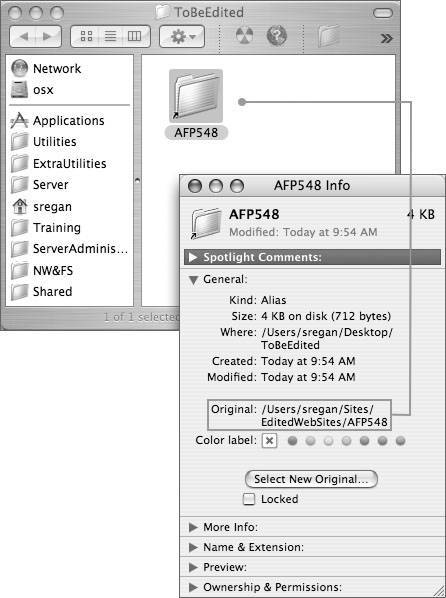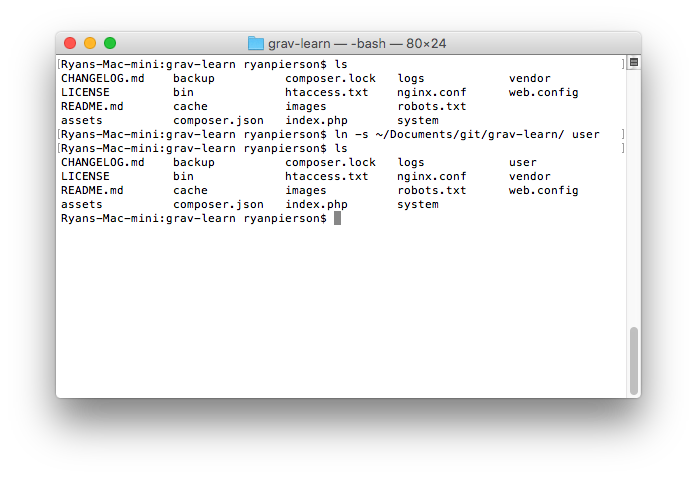
So suppose you have the following hard directory:Īnd you want to create a symlink to it in your webroot located at Generally speaking, a directory *is a file* for the purposes of a symbolic link, i.e., you don’t need to do anything different. There are a lot of conflicting comments here.ġ. 🥺 Was this helpful? Please add a comment to show your appreciation or feedback ↓ Support the nixCraft with a PayPal donation if you use Adblock 🙏 Join the nixCraft community via RSS Feed, Email Newsletter or follow on Twitter. He wrote more than 7k+ posts and helped numerous readers to master IT topics. Vivek Gite is the founder of nixCraft, the oldest running blog about Linux and open source.
#Macos symbolic linker manual#
You can read manual page offline too by using the man command or help command: See ln command man page here for more information.
#Macos symbolic linker how to#
You learned how to create a symbolic link in Linux using the ln command by passing the -s option. Specify the DIRECTORY in which to create the links Make symbolic links instead of hard links Make hard links directly to symbolic linksĬreate symbolic links relative to link location Treat LINK_NAME as a normal file if it is a symbolic link to a directory Like -backup but does not accept an argumentĪllow the superuser to attempt to hard link directories (note: will probably fail due to system restrictions, even for the superuser)ĭereference TARGETs that are symbolic links Make a backup of each existing destination file

Table 1: ln command in Linux or Unix to create symbolic links Option

# the following may not work on older Unix versions # Type the following man command or help command: $ rm /home/vivek/index.php Getting help about the ln command Use the rm command to delete a file including symlinks: $ ln -f -s /path/to/my-cool-file.txt link.txt How to delete or remove symlinks/soft links Pass the -f to the ln command to overwrite links: $ vi config.php How to overwrite symlinks/Soft link $ ln -s /home/lighttpd/http/users/vivek/php/app/ /app/ $ ln -s įor example, create a symbolic link from the /home/lighttpd/http/users/vivek/php/app/ directory to the /app/ directory you would run: So the syntax is as follows to create a symbolic link in Unix or Linux, at the shell prompt: Lrwxr-xr-x 1 veryv wheel 5 Mar 7 22:01 link1 -> file1įrom the above outputs it is clear that a symbolic link named ‘link1’ contains the name of the file named ‘file1’ to which it is linked. Sample outputs: -rw-r-r- 1 veryv wheel 0 Mar 7 22:01 file1 For example, the following would create a soft link named link1 to a file named file1, both in the current directory Soft links are created with the ln command. How do I create soft link / symbolic link under Unix and Linux?

rwxr-xr-x 1 Paul staff 24K Jun 19 11:28 hosts -> /etc/hosts You can always confirm that you’re looking at a symbolic link with the ‘ls -l’ command like so: Whether the symbolic link is to a file or a link to a directory, it does not matter, just point directly at the symlink in question and do not append the / trailing slash at the end.įor example, if we were removing a symbolic link from ~/Desktop/hosts to /etc/hosts then you would do the following: As always with the command line, be sure your syntax is precise. Using unlink to delete a symlink is extremely simple, you just need to point it at the symbolic link to unlink and remove. The best way to remove a symlink is with the appropriately named “unlink” tool.
#Macos symbolic linker mac os#
Let’s jump right to it and demonstrate how to delete a symlink.Īnd yes, this works to delete a symlink in Linux, Mac OS X, or any other modern Unix based operating system.


 0 kommentar(er)
0 kommentar(er)
